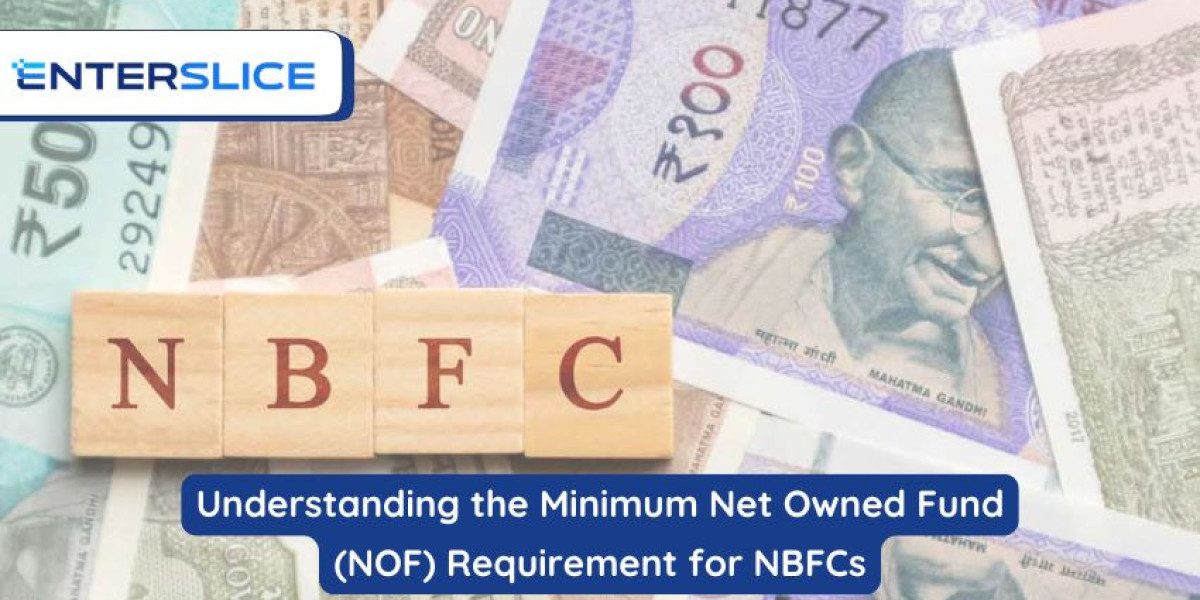Non-Banking Financial Companies (NBFCs) play a pivotal role in India’s financial ecosystem by offering credit and financial services to sectors often underserved by traditional banks. However, to ensure financial stability and operational soundness, the Reserve Bank of India (RBI) imposes specific compliance norms on NBFCs. One of the most crucial prerequisites for obtaining an NBFC license is meeting the Minimum Net Owned Fund (NOF) requirement.
In this article, we’ll break down what NOF is, why it matters, how it is calculated, and what aspiring NBFC promoters need to know to comply with RBI guidelines.
What is Net Owned Fund (NOF)?
Net Owned Fund (NOF) refers to the core capital of an NBFC that is free from any external liabilities. It acts as a financial cushion and reflects the company’s ability to withstand financial stress. The RBI uses NOF as a benchmark to assess the financial strength and credibility of NBFCs during the licensing process and beyond.
Minimum NOF Requirement for NBFCs
As per the latest RBI regulations:
The minimum NOF requirement for registering a new NBFC is ₹10 crore for most NBFCs.
Earlier, the limit was ₹2 crore, but this was revised in stages to ensure better capitalization and risk resilience.
For NBFCs in the North-Eastern Region (NER), the RBI may permit a lower threshold of ₹2 crore, subject to certain conditions.
This requirement must be fulfilled at the time of application and maintained on an ongoing basis.
Why Does the RBI Impose an NOF Requirement?
The NOF requirement is not arbitrary. It serves multiple regulatory and economic purposes:
Risk Management: Ensures that NBFCs have a financial buffer to absorb operational and credit risks.
Credibility: Establishes investor and customer confidence in the financial health of the NBFC.
Market Discipline: Prevents undercapitalized or poorly funded companies from entering the sensitive financial services sector.
Regulatory Oversight: Helps RBI monitor and manage the scale and scope of financial institutions in the non-banking space.
How is NOF Calculated?
The RBI defines NOF as:
(Paid-up Equity Capital + Free Reserves + Share Premium) – (Accumulated Losses + Deferred Revenue Expenditure + Intangible Assets + Investment in Group/Subsidiary Companies in Excess of 10% of Owned Funds)
Components Included in NOF:
Paid-up equity share capital (not preference shares)
Free reserves (reserves not earmarked for any liabilities)
Share premium (capital received over and above the face value of shares)
Unencumbered term deposits and government securities
Deductions:
Intangible assets (goodwill, patents, etc.)
Accumulated losses carried over from previous years
Deferred revenue expenditure (expenses not written off)
Excess investments in group companies or subsidiaries
This calculation must be audited by a chartered accountant and certified for submission to RBI during the NBFC registration process.
Steps to Ensure Compliance with NOF Requirement
If you're planning to register an NBFC, meeting the NOF threshold is critical. Here's how you can prepare:
1. Capital Infusion
Promoters must arrange for the required capital, which must be in the form of equity shares only. Borrowed capital or preference shares are not counted toward NOF.
2. Clean Balance Sheet
Ensure that the company’s balance sheet reflects a clear segregation between equity capital and liabilities. Accumulated losses and intangible assets should be minimized or written off to avoid reducing the NOF.
3. Bank Confirmation and Auditor Certificate
Deposit the NOF amount in a bank fixed deposit or current account in the name of the company and obtain:
A banker's certificate confirming the deposit
A chartered accountant's certificate confirming the NOF calculation
Both these documents are required when submitting an NBFC license application to RBI.
4. Avoid Related Party Investments
Investments in group companies or subsidiaries beyond 10% of the NOF amount are disallowed and will be deducted from the final NOF calculation.
What Happens if NOF Falls Below the Minimum?
An NBFC must maintain the NOF level of ₹10 crore at all times. Falling below this threshold can lead to:
RBI restrictions on accepting public funds or lending
Rejection of license renewal or conversion requests
Cancellation of the NBFC’s registration under Section 45-IA of the RBI Act
Therefore, ongoing monitoring of NOF is essential, and companies should plan for periodic revaluation and capital restructuring if needed.
NOF Requirement for Different Types of NBFCs
While ₹10 crore is the general threshold, the RBI applies different requirements based on the NBFC category:
| Type of NBFC | Minimum NOF Required |
|---|---|
| Investment and Credit Company (NBFC-ICC) | ₹10 crore |
| Microfinance Institution (NBFC-MFI) | ₹10 crore |
| Housing Finance Company (HFC) | ₹20 crore (proposed increase to ₹25 crore) |
| Infrastructure Finance Company (IFC) | ₹300 crore |
| NBFC-Factor | ₹5 crore |
Always check the RBI's latest circulars for any updates, as thresholds may change based on market conditions.
Key Takeaways
Meeting the NOF requirement is the first step in NBFC registration.
Only paid-up equity capital and free reserves are considered.
Accumulated losses and certain investments are deducted from NOF.
Regular monitoring is crucial to ensure regulatory compliance post-registration.
FAQs
1. Can preference shares be counted toward the Net Owned Fund?
No, the RBI considers only paid-up equity capital for NOF calculation. Preference shares, debentures, or borrowed funds are not included.
2. What happens if my NBFC's NOF falls below ₹10 crore after getting registered?
If your NOF dips below the required level, the RBI may issue warnings or impose penalties. Continued non-compliance can result in cancellation of your NBFC license.
3. Do all types of NBFCs require ₹10 crore as NOF?
No. While ₹10 crore is the standard for most NBFCs, other categories such as Infrastructure Finance Companies or Housing Finance Companies have higher capital requirements.
Understanding and complying with the Minimum Net Owned Fund requirement is a foundational step for establishing and operating a successful NBFC in India. By ensuring adequate capital, clean financial statements, and regulatory transparency, businesses can confidently move toward licensing and growth in the financial services sector.








